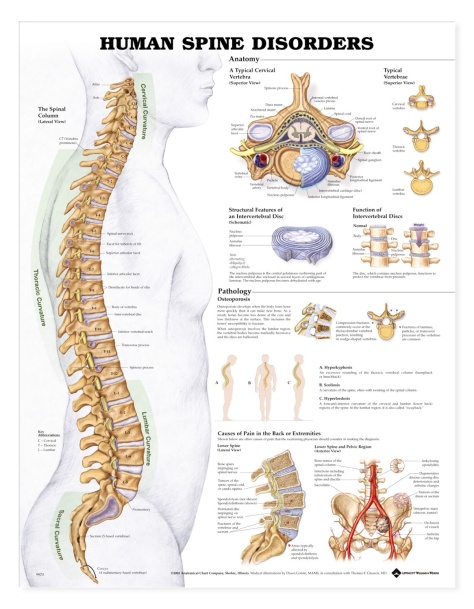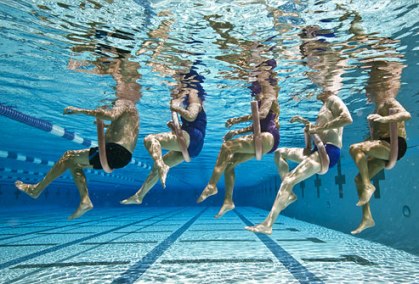 Do you wonder if you have arthritis? Do you have pain, stiffness, fatigue? What can you do to determine whether it is arthritis or structural stress and pain and are there things you can do to treat it naturally? Find out more in this informative article. Continue reading
Do you wonder if you have arthritis? Do you have pain, stiffness, fatigue? What can you do to determine whether it is arthritis or structural stress and pain and are there things you can do to treat it naturally? Find out more in this informative article. Continue reading
Tag Archives: arthritis
Why We Need Homeopathic Medicine Now More Than Ever
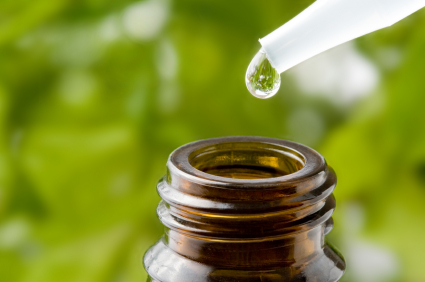 Is homeopathic medicine effective or is it all in the mind? Can it have harmful side effects? What are the benefits? What is the history? Homeopathic medicine when combined with Western Medicine makes the most powerful and comprehensive medical system in the world. The integration of the two has made my medical practice highly successful. Whether I am treating recurrent illness, rheumatoid arthritis or even cancer the combination of the two give patients hope and success in returning them to health. Continue reading
Is homeopathic medicine effective or is it all in the mind? Can it have harmful side effects? What are the benefits? What is the history? Homeopathic medicine when combined with Western Medicine makes the most powerful and comprehensive medical system in the world. The integration of the two has made my medical practice highly successful. Whether I am treating recurrent illness, rheumatoid arthritis or even cancer the combination of the two give patients hope and success in returning them to health. Continue reading
15 Arthritis Supplements and Alternative Approaches – Do They Work?
 Millions of dollars are spent every year on prescriptions help relieve pain and stiffness associated with arthritis. Are there more natural supplements or alternative treatments that can be equally as effective? Do these natural approaches actually help in alleviating symptoms and is it worth the cost or effort? Continue reading
Millions of dollars are spent every year on prescriptions help relieve pain and stiffness associated with arthritis. Are there more natural supplements or alternative treatments that can be equally as effective? Do these natural approaches actually help in alleviating symptoms and is it worth the cost or effort? Continue reading
Medicinal Tea – History, Benefits and Precautions
 Tea has long been used for medicinal purposes. What is the origin and history of medicinal tea? What are the three varieties of tea? What are the primary benefits of medicinal tea? Are there certain types of tea that can be dangerous for particular ailments or conditions? Learn the answers to these questions and much more. Continue reading
Tea has long been used for medicinal purposes. What is the origin and history of medicinal tea? What are the three varieties of tea? What are the primary benefits of medicinal tea? Are there certain types of tea that can be dangerous for particular ailments or conditions? Learn the answers to these questions and much more. Continue reading
Edema – Natural Prevention and Treatment of Swollen Joints
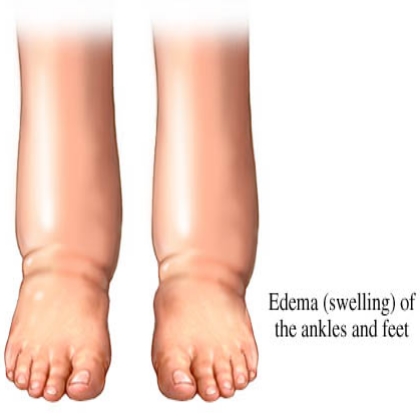 What is Edema?
What is Edema?
Edema is the medical term for swelling. Generally, edema is a response to injury or inflammation. The swelling occurs from leaking blood vessels which release fluid into the body tissues. Increased fluid from the blood vessels allows more white blood cells to enter the area, and the white blood cells help to fight off the infection, but if too much fluid is released, too often or for to long, this can cause discomfort and may lead to permanent damage. What are the symptoms of edema? Does sitting at the computer for long hours cause edema? Are there natural treatments that are effective? How can it be prevented? Continue reading
The Uses and Benefits of Cayenne Pepper
 The Greek physician, Hippocrates, famously said, “Let food be thy medicine, and medicine be thy food.” Knowing about foods and their benefits gives us the power to direct our health in a positive direction. This article will examine the benefits and uses of cayenne pepper for enhanced health and healing.Again and again, the therapeutic value of cayenne pepper has been medically validated”. What is cayenne pepper? What are common benefits? How does it affect the heart? Can it help me lose weight? Continue reading
The Greek physician, Hippocrates, famously said, “Let food be thy medicine, and medicine be thy food.” Knowing about foods and their benefits gives us the power to direct our health in a positive direction. This article will examine the benefits and uses of cayenne pepper for enhanced health and healing.Again and again, the therapeutic value of cayenne pepper has been medically validated”. What is cayenne pepper? What are common benefits? How does it affect the heart? Can it help me lose weight? Continue reading
Back Pain: Causes and Alternative and Natural Treatments
What Is the Anatomy of the Human Back?
The human back is made up of bones, muscles, tendons and ligaments. These parts make up the spinal column. The spinal column consists of 30 bones called the vertebrae. The spinal column helps hold up the upper part of the body. The back is an integral part of the human body (National Institute of Arthritis and Musculoskeletal and Skin Diseases [NIAMS], 2013.
Why Do We Experience Back Pain?
 Back pain can affect people of all ages and ethnicities. Back pain can be acute or chronic. Acute back pain usually lasts a couple of days and is generally treated by orthodox practitioners by Ibuprophen or other over-the-counter pain medications or prescription drugs. However, people can becoming addicted to pain medications especially with chronic pain. Chronic back pain normally occurs for more than three months. Older people are more susceptible to back pain because as they age, their bone strength decreases and muscles become less elastic and flexible. People who are overweight have more back pain due to the excess amount of weight the back has to support. Children who carry heavy backpacks for hours during the school day may experience back pain. Back pain can also affect people who live sedentary lifestyles, smoke often and have unhealthy diets (NIAMS, 2013).
Back pain can affect people of all ages and ethnicities. Back pain can be acute or chronic. Acute back pain usually lasts a couple of days and is generally treated by orthodox practitioners by Ibuprophen or other over-the-counter pain medications or prescription drugs. However, people can becoming addicted to pain medications especially with chronic pain. Chronic back pain normally occurs for more than three months. Older people are more susceptible to back pain because as they age, their bone strength decreases and muscles become less elastic and flexible. People who are overweight have more back pain due to the excess amount of weight the back has to support. Children who carry heavy backpacks for hours during the school day may experience back pain. Back pain can also affect people who live sedentary lifestyles, smoke often and have unhealthy diets (NIAMS, 2013).
What are the Primary Causes of Back Pain?
Mayo Clinic (2014) provides a list of possible reasons for the cause or causes of back pain:
- Ankylosing spondylitis
- Fibromyalgia
- Herniated Disk
- Kidney Infection
- Obesity
- Osteoarthritis
- Osteomyelitis
- Osteoporosis
- Paget’s Disease of Bones
- Poor Posture
- Pregnancy
- Sacroiliitis
- Sciatica
- Scoliosis
- Spinal Fractures
- Spinal Stenosis
- Sprains and strains
How are Back Problems Diagnosed?
Acute back pain can be traced back to an injury or trauma. Chronic back pain is usually a symptom of an underlying disorder or illness. To receive an accurate diagnosis for the back pain, visiting a family physician may be the wisest decision.

The physician may take a look at your medical history along with your family history to rule out any genetic predispositions to back disorders. A thorough physical exam will be conducted. In addition, a few other tests may be performed. These tests include, but are not limited, to the following (NIAMS, 2013):
- Ultrasound imaging
- Bone Scans
- Magnetic resonance imaging (MRI)
- Computerized tomography (CT) scan
- X-ray
What is the Traditional Treatment?
 To relieve acute and chronic back pain, traditional methods used by orthodox medical doctors or practitioners usually include:
To relieve acute and chronic back pain, traditional methods used by orthodox medical doctors or practitioners usually include:
- Hot and cold compresses to decrease swelling and pain.
- Medications such as Advil, Ibuprofen and muscle relaxants or prescription drugs to eliminate or reduce pain.
- Low impact exercises such as walking, climbing and swimming have been proven to increase muscle tone and decrease tension in the back.
Prescription drugs can be addictive and harmful to the body with long-term use.

What are Alternative Treatments?
Other non-traditional ways to ease back pain include the following:
- Chiropractic care. Back pain is one of the most common reasons that people see a chiropractor.
- Acupuncture. A practitioner of acupuncture inserts sterilized stainless steel needles into the skin at specific points on the body. Some people with low back pain report that acupuncture helps relieve their symptoms.
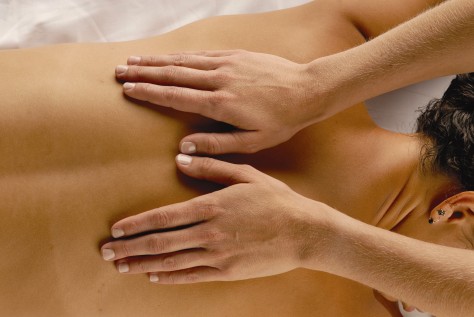
- Therapeutic Massage. If your back is caused by tense or overworked muscles, massage therapy may help. Massage can help stretch tight muscles and circulate the blood, relieving pain
- Yoga. There are several types of yoga, a board discipline that involves practicing specific postures or poses, breathing exercises and relaxation techniques. Yoga has been found to relieve stress and be effective in eliminating pain.
- Naturopathy The use of natural methods and non-toxic remedies to improve or restore health is known as naturopathy. It includes herbal remedies, homeopathic remedies, change in diet, etc.
- Physical therapy and exercise are considered alternative and natural treatments. Exercise can be very effective in treating back pain. Research studies confirm that those with osteoarthritis or sciatica back pain are greatly relieved by a daily practice of physical therapy and exercises. Be sure to consult with your trusted health practitioner before starting new exercises.
References
National Institute of Arthritis and Musculoskeletal and Skins Diseases. (2013). Handout on Health: Back Pain. Back Pain. Retrieved September 21, 2014, from http://www.niams.nih.gov/Health_Info/Back_Pain/default.asp#3
Mayo Clinic. (2014). Definition. Back Pain: Symptom. Retrieved September 21, 2014, from http://www.mayoclinic.org/symptoms/back-pain/basics/definition/sym-20050878
__________________________________________________
This article is written by Hang Pham. Hang Pham is a Monterey Bay Holistic Alliance Health and Wellness Educator. Hang Pham was born in Hoc Mon, Vietnam. She came to America in 1994, becoming a U.S. citizen in 2011. Hang graduated from Seaside High School with diploma and received her AA in General Studies from Monterey Peninsula College in 2011. She received her BA in Collaborative Health and Human Services from California State University Monterey Bay (CSUMB) in 2012. In addition to working as a volunteer staff with the Monterey Bay Holistic Alliance, she currently works as a Clerical Aid in the Human Resources Department of Salinas City Hall. The Monterey Bay Holistic Alliance is a registered 501 (c) 3 nonprofit health and wellness education organization. For more information about the Monterey Bay Holistic Alliance contact us or visit our website at www.montereybayholistic.com.
is written by Hang Pham. Hang Pham is a Monterey Bay Holistic Alliance Health and Wellness Educator. Hang Pham was born in Hoc Mon, Vietnam. She came to America in 1994, becoming a U.S. citizen in 2011. Hang graduated from Seaside High School with diploma and received her AA in General Studies from Monterey Peninsula College in 2011. She received her BA in Collaborative Health and Human Services from California State University Monterey Bay (CSUMB) in 2012. In addition to working as a volunteer staff with the Monterey Bay Holistic Alliance, she currently works as a Clerical Aid in the Human Resources Department of Salinas City Hall. The Monterey Bay Holistic Alliance is a registered 501 (c) 3 nonprofit health and wellness education organization. For more information about the Monterey Bay Holistic Alliance contact us or visit our website at www.montereybayholistic.com.
Disclaimer: The Monterey Bay Holistic Alliance is a charitable, independent registered nonprofit 501(c)3 organization and does not endorse any particular products or practices. We exist as an educational organization dedicated to providing free access to health education resources, products and services. Claims and statements herein are for informational purposes only and have not been evaluated by the Food and Drug Administration. The statements about organizations, practitioners, methods of treatment, and products listed on this website are not meant to diagnose, treat, cure, or prevent any disease. This information is intended for educational purposes only. The MBHA strongly recommends that you seek out your trusted medical doctor or practitioner for diagnosis and treatment of any existing health condition.
Osteoporosis: The Other Silent Killer – A Prescription for Proactivity
The Other Silent Killer
What is Osteoporosis and who is at risk? Osteoporosis is a disease of the skeletal system characterized by low bone mass and deterioration of the bone tissue.
 While the symptoms of the disease seldom become debilitating until the latter stages of life, its propagation may begin much earlier.
While the symptoms of the disease seldom become debilitating until the latter stages of life, its propagation may begin much earlier.
Epidemic Proportions
According to statistics from the National Osteoporosis Foundation, 52 million Americans have low bone density or osteoporosis. 50% of women and 25% of men will break a bone after age 50 due to osteoporosis. 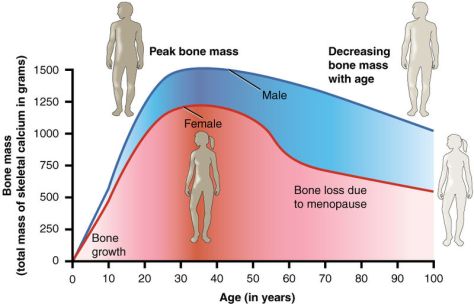 By 2020, half of Americans over 50 are expected to have low bone density or osteoporosis. A woman’s risk of breaking a hip is equal to her risk of developing breast, uterine and ovarian cancer combined.
By 2020, half of Americans over 50 are expected to have low bone density or osteoporosis. A woman’s risk of breaking a hip is equal to her risk of developing breast, uterine and ovarian cancer combined.
Proactive Prevention of Osteoporosis
Bone density peaks around age 30 and subsequently declines. Adolescents and young adults should regularly participate in weight bearing activities in order to build up a “bone density reserve.”

The American College of Sports Medicine, ACSM, recommends physical activities that generate relatively high-intensity loading forces to augment bone mineral accrual in children and adolescents. Evidence suggests exercise-induced gains in bone mass in children are maintained into adulthood, suggesting that physical activity habits during childhood may have long-lasting benefits on bone health.
Treatment is Paramount
While Osteoporosis is preventable, it is not curable. The only option is treatment. Treatment of established osteoporosis is cost-effective irrespective of age (Kanis, et al, 2005). Studies have shown that bone mineral density in postmenopausal women can be maintained or increased with therapeutic exercise.
Basic Bone Anatomy
Bones are made from collagen, calcium-phosphate complexes, and bone cells. Bone tissue is living, and is constantly being remodeled. The underlying cause of osteoporosis is an imbalance between bone resorption and bone formation. Excessive bone resorption, inadequate formation of new bone during remodeling, and inadequate peak bone mass are all mechanisms by which osteoporosis develops. Aging results in bone being lost more rapidly than it is formed.
Weight-bearing and Loading Exercise for Bone Health
Weight bearing activities like walking, jogging, dancing, stair climbing and hiking allow the force of gravity to act through the skeleton. Through this application of force, mechanisms that stimulate bone density are activated in response to the mechanical loading. The training principle of progressive overload is fundamental to the effective treatment of osteoporosis.
 Exercise stimulates effective bone modeling/remodeling.
Exercise stimulates effective bone modeling/remodeling.
Strength Training for Bone Health
Impact loading exercises are superior to traditional weight-bearing activities for maintaining bone health. Impact loading exercise simply means any exercise that requires you to support your own body weight, including walking, aerobics or weightlifting.

Resistance training can be defined as the act of repeated voluntary muscle contractions against a resistance greater than what is normally experienced in daily life. Training of this kind is known to increase strength through changes in both the muscular and nervous systems. In one study, resistance training had more of an effect on bone strength in the hip and lower spine than walking alone (Harvard Men’s Health Watch, 2013). Nine months to a year of regular exercise should be afforded before appreciable increases in bone mass are detected. Proper form and technique are important. Volume, frequency, duration and other training variables should be specific to the condition of the individual. For individuals with diagnosed osteoporosis, the ACSM’s Resource Manual for Guidelines for Exercise Testing and Prescription (Pescatello, et al, 2014) suggests the following guidelines for physical activity and resistance training aimed to prevent falls:
- One to three sets with five to eight repetitions of four to six weight-bearing, lower-body strength exercises using body weight as resistance
- Activities performed two to three days/week
- Additional resistance may be applied gradually and conservatively
(up to 10 lbs.) with weighted vest - Therapy bands & rubber tubing may be used to facilitate
range-of-motion exercises - Avoid impact exercise, spinal flexion against resistance, spinal
extension, high compressive forces on the spine, quick trunk rotation
Aerobic Training
Aerobic training is also important to the overall efficiency of the system, and in maintaining bone mass. Aerobic exercises are a system of physical conditioning, such as running, walking, swimming, or calisthenics strenuously performed so as to cause a significant temporary increase in respiration and heart rate. Activities that engage larger muscles like walking, cycling, swimming, and water walking are recommended for overall health, however claims that aerobic exercise can build bone density are false. According to ACSM, “Although aerobic exercises are beneficial and important for overall fitness, they don’t specifically help build bone density”.
Non-Impact Exercises
While non-impact exercises may not directly support bone mass, they still offer immense indirect benefits in the treatment of osteoporosis. Balance exercises (e.g. Tai Chi, aquatic exercises) heighten proprioception and reduce the risk of falling, which is the leading cause of lost independence among the elderly.
Postural exercises improve posture and help support the spine. Functional exercises improve the ability to perform activities of daily living, increasing quality of life and maintaining independence. Individuals who practice Tai Chi have 47% less falls and only 25% of the hip fractures of those who do not (Province, et al, 1995). Tai Chi can be beneficial for stunting bone loss in weight-bearing bones in early postmenopausal women (Chan, et al, 2004).
Dietary Approaches to Fighting Osteoporosis
Calcium and Vitamin D – Two of the most important nutrients in fighting osteoporosis are calcium and vitamin D. Calcium is an important component of the bone matrix, while vitamin D assists in its absorption. Supplementation with vitamin D has improved lower extremity muscle performance and reduced risk of falling in several high-quality double blind randomized control trials (Bischoff-Ferrari, et al, 2009). The Food and Nutrition Board of the Institute of Medicine of the
National Academies, National Institute of Health, Office of Dietary Supplements recommends the following intake levels for post-menopausal women:
- Calcium: 1200 milligrams/day
- Vitamin D: 10 micrograms/day (400 International Units/day) from ages 51 to 70 (Increase to 15 micrograms/day [600 International Units/day] after age 70)
Protein – Aging may compromise the body’s ability to process protein efficiency. Older adults should be vigilant in their consumption of protein in order to avoid protein malnutrition. In one study with elderly men and women, higher dietary protein intake was associated with a lower rate of age-related bone loss (Hannan, et. al, 2000).
______________________________
References
American College of Sports Medicine
Bischoff-Ferrari HA, Dawson-Hughes B, Staehelin HB, et al. (2009) Fall prevention with supplemental and active forms of vitamin D: a meta-analysis of randomised controlled trials. Br Med J 339:b3692.
Center for Disease Control. – Calicium
Chan, K; Qin, L; Lau, M; Woo, J; Au, S; Choy, W; Lee, K; Lee, S. A randomized, prospective study of the effects of Tai Chi Chun exercise on bone mineral density in postmenopausal women. Arch Phys Med Rehabil 2004;85:717–22.
Daltroy, L. H., Larson MG, Eaton HM, et al. Discrepancies between self-reported and observed physical function in the elderly: the influence of response shift and other factors. Soc Sci Med. 1999;48(11):1549–61. Medline:10400256.
Hannan MT, Tucker KL, Dawson-Hughes B, et al. (2000) Effect of dietary protein on bone loss in elderly men and women: the Framingham Osteoporosis Study. J Bone Miner Res 15:2504.
Hartard M, Haber P, Ilieva D, et al. (1996) Systematic strength training as a model of therapeutic intervention. A controlled trial in postmenopausal women with osteopenia. Am J Phys Med Rehabil 75:21.
Kanis JA, Borgstrom F, Zethraeus N, et al. (2005) Intervention thresholds for osteoporosis in the UK. Bone 36:22
Kemmler W, Lauber D, Weineck J, et al. (2004) Benefits of 2 years of intense exercise on bone density, physical fitness, and blood lipids in early postmenopausal osteopenic women: results of the Erlangen Fitness Osteoporosis Prevention Study (EFOPS). Arch Intern Med 164:1084.
Kerr, D., Ackland, T., Maslen, B., Morton, A. and Prince, R. (2001), Resistance Training over 2 Years Increases Bone Mass in Calcium-Replete Postmenopausal Women. J Bone Miner Res, 16: 175–181. doi: 10.1359/jbmr.2001.16.1.175
National Osteoporosis Foundation.
Palombaro, K. M., Black, J. D., Buchbinder, R., & Jette, D. U. (2013). Effectiveness of Exercise for Managing Osteoporosis in Women Postmenopause. Physical Therapy, 93(8), 1021-1025. doi:10.2522/ptj.20110476
Pescatello L, Arena R, Riebe D, Thompson PD, ACSM’s Resource Manual for Guidelines for Exercise Testing and Prescription, American College of Sports Medicine, 9th ed., 2014, Philadelphia : Wolters Kluwer/Lippincott Williams & Wilkins Health
Preisinger E, Alacamlioglu Y, Pils K, et al. (1995) Therapeutic exercise in the prevention of bone loss. A controlled trial with women after menopause. Am J Phys Med Rehabil 74:120.
Province MA, Hadley EC, Hornbrook MC, et al. (1995) The effects of exercise on falls in elderly patients. A preplanned meta-analysis of the FICSIT Trials. Frailty and Injuries: Cooperative Studies of Intervention Techniques. JAMA 273:1341.
Raisz, L. (2005). “Pathogenesis of osteoporosis: concepts, conflicts, and prospects”. J Clin Invest 115(12): 3318–25
Strength Training is Better for Bones. (2013). Harvard Men’s Health Watch, 2013 Jul;17(12):8.
_______________________________
 This article is written by Kevin McMahan, a Health and Wellness Educator for the Monterey Bay Holistic Alliance. Kevin has had a lifelong interest in health and wellness. After graduating from Carmel High School he went on to get an associates degree in social sciences from Monterey Peninsula College, and a bachelors in kinesiology from California State University Monterey Bay. He is a certified personal trainer through the American College of Sports Medicine. “Your health is your wealth”, is something that he always likes to say. The Monterey Bay Holistic Alliance is a registered 501 (c) 3 nonprofit health and wellness education organization. For more information about the Monterey Bay Holistic Alliance contact us or visit our website at www.montereybayholistic.com.
This article is written by Kevin McMahan, a Health and Wellness Educator for the Monterey Bay Holistic Alliance. Kevin has had a lifelong interest in health and wellness. After graduating from Carmel High School he went on to get an associates degree in social sciences from Monterey Peninsula College, and a bachelors in kinesiology from California State University Monterey Bay. He is a certified personal trainer through the American College of Sports Medicine. “Your health is your wealth”, is something that he always likes to say. The Monterey Bay Holistic Alliance is a registered 501 (c) 3 nonprofit health and wellness education organization. For more information about the Monterey Bay Holistic Alliance contact us or visit our website at www.montereybayholistic.com.
Disclaimer: The Monterey Bay Holistic Alliance is a charitable, independent registered nonprofit 501(c)3 organization and does not endorse any particular products or practices. We exist as an educational organization dedicated to providing free access to health education resources, products and services. Claims and statements herein are for informational purposes only and have not been evaluated by the Food and Drug Administration. The statements about organizations, practitioners, methods of treatment, and products listed on this website are not meant to diagnose, treat, cure, or prevent any disease. This information is intended for educational purposes only. The MBHA strongly recommends that you seek out your trusted medical doctor or practitioner for diagnosis and treatment of any existing health condition.
The Healing Properties of Scotch Pine
 Looking for Healing for the Holidays? It might be right under your nose!
Looking for Healing for the Holidays? It might be right under your nose!
The History of Scotch Pine Healing. Everyone loves the smell of pine trees with its branches reminding us of the winter holidays. Early Europeans used pine wood for building houses, the tall straight trees for the masts of sailing ships, and its needles to stuff their mattresses. The Native Americans ate the tops to prevent scurvy. The cones were boiled with other herbs and honey to relieve a cough, and the needles were pounded and added to the bath to relieve arthritis.
How is Pine used Today for Healing? Pine is warm and dry, and is an excellent expectorant for clearing phlegm from the lung, bronchial and sinus, as well as being antiseptic. It aids digestion, stimulates the kidneys, helps arthritis and gout, and can be given for physical and mental depletion, exhaustion and anxiety. Always mix it into carrier oil such as almond, sesame or jojoba, never put an essential oil directly on your body. Its resins and turpentine makes solvents for paints today.

As a flower essence remedy, it is given to those who blame themselves, feel responsible for the problems and mistakes of others and live with constant guilt. Pine works to help us learn self-acceptance and how to set appropriate boundaries.
Your holiday pine tree, wreath or garland will not only brighten up your home, it highlights the lesson of the Season—love and forgiveness as we take a moment to realize the sacredness and divinity first of ourselves, and then of all others.
 This article is written by Maggie Smith. Her journey with flower essences began in 1993 with the Flower Essence Society of California. Maggie Smith is the creator of Flower Essence Sprays, an advanced energy healer, a graduate and teacher for the School of Energy Mastery, a member of the Monterey Bay Holistic Alliance and a Monterey Bay Holistic Alliance Health and Wellness Educator. If you are interested in membership to the Monterey Bay Holistic Alliance, and/or to publish your health article to our blog, contact us
This article is written by Maggie Smith. Her journey with flower essences began in 1993 with the Flower Essence Society of California. Maggie Smith is the creator of Flower Essence Sprays, an advanced energy healer, a graduate and teacher for the School of Energy Mastery, a member of the Monterey Bay Holistic Alliance and a Monterey Bay Holistic Alliance Health and Wellness Educator. If you are interested in membership to the Monterey Bay Holistic Alliance, and/or to publish your health article to our blog, contact us
What Causes Leg Pain? How to Prevent and Treat Leg Pain
What causes leg pain? How can it be prevented and treated? There are many reasons for leg pain. Some are more serious than others. It’s best to see your doctor as soon as possible if you are experiencing pain and/or swelling in the legs. Leg pain can be a symptom of a blood clot which if not treated immediately can cause stroke or heart failure.
Here are the most common causes of leg pain.
- Osteoporosis
Osteoporosis is a condition of the bones where they are thin and subject to increased risk for fracture. Muscle and bone pain is a well-documented symptom of severely deficient vitamin D. Vitamin D and calcium are important bone builders and are recommended supplements for treatment and prevention of osteoporosis. Leg cramps that occur at night are often a signal that your calcium, magnesium, and/or potassium blood levels have dropped to low levels. If low calcium, magnesium or potassium levels continue over long periods of time, this may lead to excessive bone loss and osteoporosis.
 Fractures
Fractures
A fracture usually results from traumatic injury to bones causing the bone tissues or bony cartilage to be disrupted or broken. There are different types of fractures including simple, compound, incomplete and complete. Simple fractures (“closed fractures”) are sometimes not obvious and not seen by the eye, as the skin has not been injured. Fractures can cause leg pain. Compound fractures (“open fractures”) cause a tearing or rupturing of the skin and are more prone to infection. Fractures can cause leg pain. Treatment is immobilization to gain realignment of the bone.
- Shin splints
Shin splints (medial tibial stress syndrome) refers to the pain that results from stress on the tissues that connect muscles to the shin bone (tibia). They also may come from the small bone of the lower leg and ankle, (the fibula). The most common cause of shin splints is stressful activities that constantly pound on the legs and feet. It is a common complaint among basketball players, tennis players and runners. Physicians usually recommend that people with shin splints take an extended period of rest to let that area heal. - Strain
A strain (also known as “pulled muscle”) is an injury to a muscle or tendon in which the muscle fibers tear as a result of overstretching. A tendon is a fibrous cord of tissue that connects muscles to bones. Strains often occur in the lower back and in the hamstring muscle in the back of your thigh. Mild strains can be treated at home by resting the effected area, but you should see a doctor if you can’t walk more than a few steps without significant pain, can’t move the affected joint, or have numbness in any part of the injured area. Strain is generally treated by applying cold pack, elevating, compressing the area, and rest.  Sprain
Sprain
A sprain is an injury to a ligament caused by tearing of the fibers of the ligament. The ligament can have a partial tear, or it can be completely torn apart. Sprains most often occur in the ankle, knee and wrist. For most sprains home treatment is effective. Elevate the area, rest, apply cold pack, compress the area with elastic wrap or sleeve. See a physician or trusted health-care professional if pain is more severe or not subsiding.
- Internal bleeding
Internal bleeding is bleeding occurring inside the body. It can be a serious medical emergency depending on where it occurs (e.g. brain, stomach, lungs), and can potentially cause death and cardiac arrest if proper medical treatment is not received immediately. Internal bleeding (also called internal hemorrhage) is a loss of blood that occurs from the vascular system into a body cavity or space. It can result in pain, swelling, dizziness, muscle weakness, blood in urine, stool, or vomit, or noticeable bruising - Peripheral arterial disease (PAD)
Peripheral arterial disease (PAD) happens when there is a narrowing of the blood vessels outside the heart. The cause of PAD is atherosclerosis. Atherosclerosis is caused by a build up of plaque (made up of fat and cholesterol) on the walls of the arteries. The arteries supply blood to the arms and legs.  Deep vein thrombosis (DVT)
Deep vein thrombosis (DVT)
A deep vein thrombosis (DVT) is a blood clot that forms in a vein that is deep inside the body. Most deep vein clots occur in the lower leg or thigh. If the vein swells, the condition is called thrombophlebitis. DVT can be very serious and lead to heart attack or stroke or a serious problem in the lung, called a pulmonary embolism. Treatment includes medicines to break up and prevent blood clots, relieve inflammation and swelling. Sitting for long periods of time can increase the risk of blood clots. Elevating the area and applying moist heat can be helpful. Always take plenty of breaks, stretch, and drink plenty of liquids.- Shingles
Shingles can be a cause of leg pain. Shingles is a disease caused by the varicella-zoster virus. This is the same virus that causes chickenpox. Symptoms include pain and red blisters on the skin that appear on one side of the body. Symptoms usually begin with muscle aches and pain. The pain can be a severe shooting pain, or burning or tingling, electrical sensation. Blisters usually go away after 14 days but the pain of shingles can last for weeks, months and even years.
- Alcoholism
Alcoholism can lead to a condition known as alcoholic polyneuropathy (also known as “alcohol leg“). This is a neurological disorder in which multiple peripheral nerves throughout the body malfunction at the same time. It causes the degeneration in neurons of both the sensory and motor systems. People with alcoholic polyneuropathy experience pain and motor weakness usually beginning first in the feet, legs and hands and then moving inwardly toward the center of the body. Treatment is abstaining from alcohol, nutritional supplements, and pain management.
- Diabetes
Diabetes is a group of metabolic diseases in which a person has high blood sugar, either because the pancreas does not produce enough insulin, or because the cells in the body do not respond to the insulin that is produced. People with diabetes can experience diabetic neuropathy. The most common symptoms of diabetic neuropathy are numbness, tingling and pain in the legs or feet, and also a risk of skin damage. Treatment of diabetes involves keeping the blood sugar levels normal, usually with diet, exercise, and appropriate medications (insulin).
 Siatica
Siatica
Sciatica (sciatic neuritis, sciatic neuralgia, or lumbar radiculopathy) is a set of symptoms including pain caused by general compression or irritation of one of five spinal nerve roots of each sciatic nerve or to the left or right or both sciatic nerves. Symptoms include lower back pain, buttock pain, and pain, numbness or weakness in various parts of the leg and foot. Other symptoms include a “pins and needles” sensation, or tingling and difficulty moving or controlling the leg. Typically, symptoms only manifest on one side of the body. The pain may radiate below the knee. Treatment varies depending on the cause of the problem (pregnancy, herniated disc, tumor, etc.). Spinal manipulation, surgery, physical therapy, and pain management are typical treatments.
- Peripheral neuropathy
Peripheral neuropathy is a result of nerve damage. It often causes weakness, tingling, numbness and pain, usually beginning in your hands and feet but also in the legs and other parts of the body. Peripheral neuropathy distorts and sometimes interrupts messages between the brain and the rest of the body. Pain and other symptoms often appear symmetrically, for example, in both feet followed by a gradual progression up both legs. Next, the fingers, hands, and arms may become affected, and symptoms can progress into the center of the body. Treatment includes exercise programs and physical therapy, eating a balanced diet, taking vitamin supplements, and limiting or avoiding alcohol consumption. - Cancer
Cancer can be a cause of leg pain. Cancer is caused by an uncontrolled division of abnormal cells in a part of the body. Cancer cells are called “malignant” cells. Cancer expands locally by invasion and systemically by metastasis. Traditional treatments include surgery, radiation, chemotherapy. Alternative treatments are becoming more popular. Particular dietary considerations and lifestyle changes have been shown to be effective in cancer prevention.
 Arthritis
Arthritis
Arthritis can be a common cause of leg pain. Arthritis is inflammation of joints due to infectious, metabolic, or constitutional causes.
Arthritis leg pain generally is associated with specific joints (e.g., knees or hips). When cartilage around a joint wears down, a person may feel pain, stiffness, and experience swelling at the joint. Arthritic joints may also be warm and have limited movement. Treatment for arthritis pain can include pain treatment, exercise, resting the joint, elevating the effected body part, change in lifestyle, and nutritional or diet changes.- Myalgia
Myalgia isn’t a disease but is a symptom of many diseases and disorders. The most common causes are the overuse or over-stretching of a muscle or group of muscles. Myalgia has also been referred to as muscular rheumatism. Leg pain which is caused by muscle pain can be generally classified as myalgia. Treatments vary depending upon the cause of the problem, but can include pain treatment, exercise, resting the joint, constrictive wrap, cold packs, elevating the effected body part, change in lifestyle, and nutritional or diet changes.
- Muscle cramps
Leg pain can be caused by a muscle cramp in the leg. A muscle cramp is an involuntarily and forcibly contracted muscle that does not relax. Cramps can be prevented by having adequate nutrition and hydration, exercising safely (warming up), and maintaining flexibility t factors. Cramps can be stopped by stretching the muscle. A cramp can last a few minutes or several hours. Cramps of the legs and feet, are common. A cramp of the calf is very common and known as a “charley horse.” - Dehydration
Dehydration can be a cause of leg weakness, pain, and cramping. When a person is dehydrated it means that the body does not have as much water and fluids as it should. The severity of the dehydration (mild, moderate, or severe) is determined by how much of the body’s fluid is lost or not replenished. When it is severe, dehydration is a life-threatening emergency and a person could become unconcious and risk death, heart failure or stroke. Hydration is important in pain management.  Hamstring injury
Hamstring injury
A hamstring injury is a common injury to the leg and common cause of leg pain. It is caused by the straining of the hamstring (also known as a “pulled hamstring”). This injury is defined as an excessive stretch or tear of muscle fibers and related tissues of the hamstring muscles — the group of three muscles that run along the back of the thigh, and is common among dancers, runners, and soccer, basketball, football, or tennis players. It occurs with activities that involve running with excessive stopping and starting. Surgery may be needed to repair a torn muscle but generally homecare treatment is advised, including rest, elevation, cold packs, and pain treatment.- Trauma
Trauma to the leg can be the cause of leg pain. Trauma can be a serious injury or shock to the body, as from violence or an accident. Most leg injuries in children and teenagers occur during sports or play. The risk for injury is higher in sports, such as football, wrestling, snowboarding, in-line skating, soccer, biking, skiing, and skateboarding. Knees, ankles and legs are often injured. Elderly adults with osteoporosis (thinning bones) are more at risk for fractures. Treatment for trauma to the leg varies depending on the injury and may include surgery.
If you are experiencing leg pain and unsure of the cause, see your doctor or trusted health care provider to determine the cause of your discomfort and to seek treatment.


